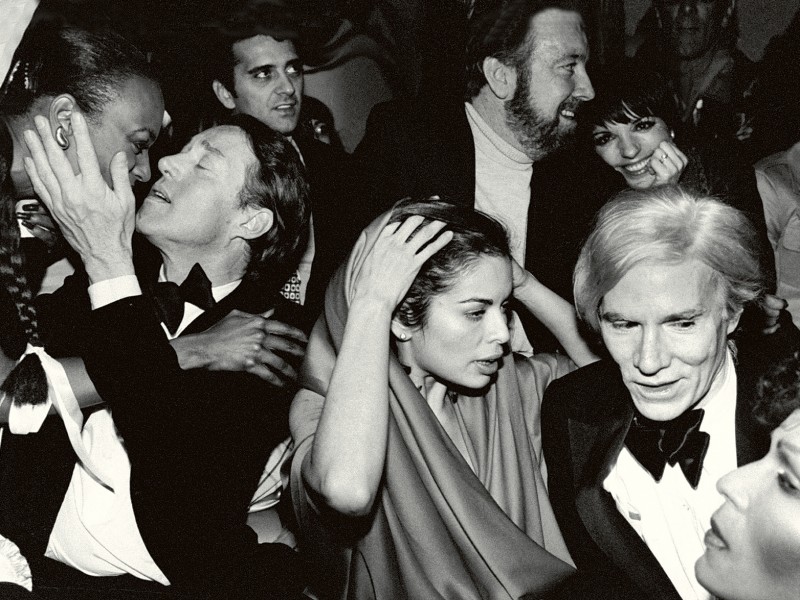Within the fabric of our memory, taste is a thread laden with emotions. As we age, pulling at the thread can help us better understand the past whilst simultaneously evoking the most powerful feelings. Great chefs master the alchemy of these emotions with an incredible artistic dexterity, perhaps none more so than Massimo Bottura.
As the owner of Osteria Francescana, Bottura fondly recalls spending time underneath the kitchen table upon which his Nonna would roll pasta. As flour sprinkled across the table and fell to the ground, Bottura would reach up and grab individual tortellino from the table. “When they ask, ‘What is the plate of your life?’… That is the rolled tortellino. Because that is the moment in which I was stealing the rolled tortellino, just made, one second before, from the hands of my Grandmother.” Bottura recalls in Chef’s Table. “That is why food is so important for me, because in many different creations I do, you can find that I’m trying to take you back to that moment, to when you were a child.”
Born and raised in Modena, in the Emilia Romagna region of central Italy, Bottura has stayed close to his roots. Growing up and cooking within the rich landscape of Cucina Modenese (the kitchen of Modena), Bottura’s small restaurant has scaled the heights of fine dining. Currently ranked as the top restaurant in the world by the World’s 50 Best Restaurants, Osteria Francescana follows in the footsteps of renowned restaurants such as Noma and elBulli, whose fame—and fortune—propelled their sumptuous craft into the realms of luxury.
Many of Bottura’s dishes embody a refreshing playfulness akin to his childlike nature. The dessert entitled Oops I dropped the lemon tart, for example, presents a purposefully smashed lemon tart that was inspired by his souschef Takahiko Kondo. When Kondo dropped a lemon tart by accident, the kitchen team set about recreating the scene with a series of drips and sprays—a technique reminiscent of a Jackson Pollock painting.
To the uninitiated, the humble title of ‘Osteria’ could be misleading. But the meaning behind the name, is perhaps our first glimpse at Bottura’s unassuming philosophy of humility and playfulness—the literal translation being ‘Tavern’. This style of dining is akin to a Trattoria in Italian culture and denotes scenes of a casual mid week night out at your ‘local’. However, the opulent dining at Osteria Francescana is far beyond ‘regular’. It packs an immense sensory weight and gustatory intensity.
Bottura is greatly inspired by his wife Lara Gilmore, whose interest in art—and in particular the Venetian Biennale—have influenced Bottura’s creative process immensely. They have been inspiring one another’s creative process since they met in New York in 1993. As a New Yorker, Gilmore’s explora-tive, wide eyed approach provided the perfect compliment to Bottura’s savvy and cheeky Italian nature. The food at Osteria Francescana is rebellious, light hearted, infused with energy and most importantly, highly contemplative. Perhaps the result of the creative exchange between curious minds.
Bottura’s menu at Osteria Francescana is full of stories and quite frequently, those stories are underpinned by a greater social value. Modena is a wealthy town that in the times past, held strong links to the Medici’s. Today, Modena is world renowned for its balsamic vinegar, tortellini, cars—Enzo Ferrari was born here—and is the birthplace of the late opera singer Luciano Pavarotti. The Modenese are passionate about their food and with some of the richest farming country in the world, it is not suprising they take their spread so seriously. Having dined at Osteria Francescana four years ago, the images of the evening remain emblazoned in my mind. The interior of the restaurant took the form of a salon. Muted tones, soft seating and a spacious plan. The lighting was diffused and yet there was a focus on the table, whose simplicity heightened our anticipation of what was to come. The glasses swelled with Italian wine, and to begin we experienced the biscuit-bubbles of a franciacorta. The amber hues and bitterness of a skin-contact wine soon followed, as did the searing acidity and relentless tannins of Italy’s iconic reds. The wait staff were confident without intrusiveness, and the food was of course the subject of conversation.
With impeccable timing, we were presented with a tightly coiled hill of spaghetti strung pasta, whose egg based richness glistened in the lustre of a burnt calamari broth. A presentation whose compact tidiness was classic—no doubt channelling the grander days of the renaissance—and whose flavour was so layered and stratified as to only speak of the sea in a most salty marine-channeling composition. Following on we had A Croccantino of Foie Gras whose appearance is best conveyed as a mini Golden Gaytime presented upon a small paddle pop stick. The toasted nutty exterior popped with crunch, the creamy mousse texture of foie gras perfectly contrasted the sweet and salty aged balsamic vinegar, famously produced within Modena.
We were captivated by the intensity of flavour, thought and arrangement of each dish as they arrived at the table. The dishes were imaginatively titled with frequent tongue-in-cheek notions. Bottura’s process lures diners to places they never thought possible of Cucina Modenese. The ingredients and combinations are familiar, but their permutation and realisation are altogether novel. I remember the words of Artist Maurizio Cattelan coming to mind: ‘My ideas are all the same but look different’. Perhaps it is no surprise that Bottura is inspired by Cattelan’s work.
Having met with Bottura on several occasions, I can attest to his aloof candour. Coarsely described, Bottura comports himself in a manner that is at once electric and meditative. He arcs between humour and intense passion, his eyes darting around the room while his mind’s eye is focused on deconstructing the situation; a new thought for a dish, a flavour he could develop or a texture that he could add. During dinner, Bottura slides through the dining room feeding off the emotions of the diners, bouncing in unison with their enjoyment.
It would be easy to surmise that Bottura’s innovative cooking successfully elevates a staunchly traditional food culture, riling the young and modern against the old and archaic. However, Bottura’s food is more about contemplation and intense mindfulness. The dishes exhibit an immense respect for the produce of Modena and the surrounding area of Emilia-Romagna.
Interestingly the exuberant food at Osteria Francescana didn’t immediately mesh with the more conservative views and tastes of the locals. Dishes such as Tortellini Walking Into The Broth, for example, caused anger and confusion as to why Bottura was challenging diners to interpret their childhood memories in such a new way. However, with time, persistence and the support of a travelling clientele, the restaurant found its feet.
The truth in the eyes of Bottura, is found—most poignantly and arguably—in his use of local ingredients. Bottura’s distillation of regional character goes far beyond a cook up from the local farmer’s market—his oeuvre seeks to amplify tradition in a most considered way. Take for example the dish Five Ages of Parmigiano Reggiano in different textures and temperatures: parmesan made in the traditional style of this region that is both fresh and lactic in its youth, creamy and rich in middle age until developing nuance, saltiness and deeper complexities later in its life. For the majority of us, these nuances and complexities are lost in a mountain of granulated, mass produced pasta toppings. Bottura champions their individual characters in a harmonious amalgam over the cheese’s lifespan.
Related Features
-
171
-
-
-

